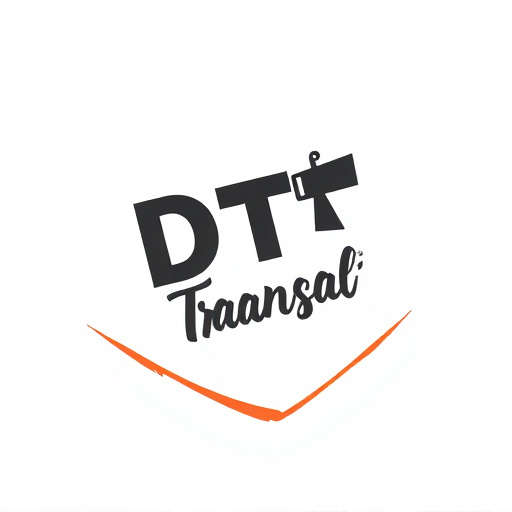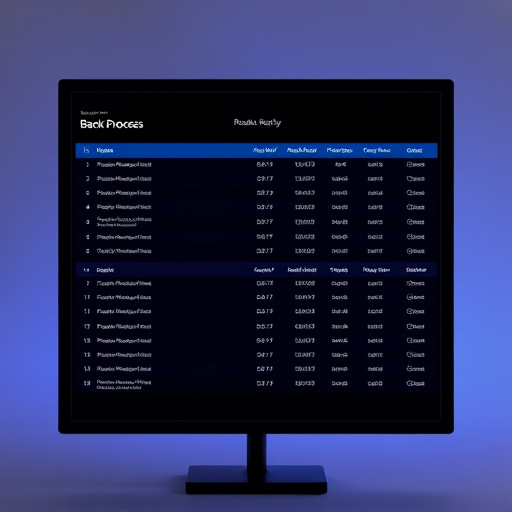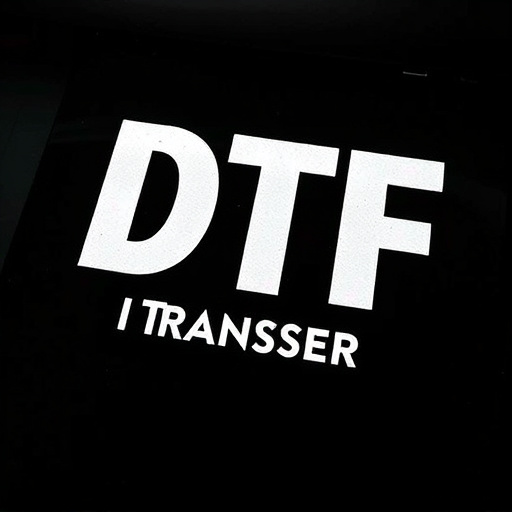The Direct-to-Film (DTF) transfer process is an innovative printing technique for large-scale production, offering unparalleled precision and quality. Streamlined production involves transferring ink directly from a plate to a substrate, reducing waste and turnaround times. Design complexity, order volume, and raw material availability impact production time. Pre-production planning, including resource allocation and equipment checks, ensures efficient execution. The meticulous DTF transfer process includes strategic ordering, manufacturing, packaging, and quality checks. Robust post-production QA guarantees accuracy and customer satisfaction. Optimizing turnaround times through automation, standardization, and communication enhances operational efficiency.
“Unraveling the intricacies of DTF Transfer production periods is vital for efficient order fulfillment. This comprehensive guide delves into the factors shaping the time required to complete transfer orders, offering valuable insights for logistics managers and manufacturers.
From understanding the fundamentals of DTF Transfer to optimizing pre-production planning and quality assurance checks, we break down each critical step. Learn how to streamline your production process, enhance turnaround times, and ensure consistent quality with our expert tips.”
- Understanding DTF Transfer: A Brief Overview
- Key Factors Affecting Production Time
- Pre-Production Phase: Preparing for the Transfer
- Production Process: Step-by-Step Breakdown
- Post-Production Checks and Quality Assurance
- Optimizing Turnaround Time: Tips and Best Practices
Understanding DTF Transfer: A Brief Overview

The DTF (Direct-to-Film) transfer process is a cutting-edge technique revolutionizing the printing industry, especially for large-scale production runs and complex design requirements. Unlike traditional printing methods, DTF involves transferring ink directly from a plate onto a substrate, offering unparalleled precision and quality. This innovative approach streamlines the production period significantly, making it an ideal solution for businesses aiming to meet fast-paced order demands without compromising on aesthetics.
By employing advanced machinery and specialized inks, DTF Transfer ensures consistent and vibrant color reproduction across various materials, from textiles to cardboard. Its efficiency lies in the ability to print on-demand, reducing waste and turnaround times compared to conventional printing processes. This technology is a game-changer for businesses seeking efficient, cost-effective, and high-quality order fulfillment, especially for transfer orders requiring intricate designs and rapid delivery.
Key Factors Affecting Production Time

The production period for completing transfer orders, especially in the context of DTF (Direct to Final) transfers, is significantly influenced by several key factors. One of the primary considerations is the complexity of the design or product being transferred. Intricate patterns, fine details, and unique finishes can extend the time required for precise printing and finishing processes. For instance, high-resolution graphics or delicate embroidery may demand more meticulous handling and advanced machinery, thereby increasing production time.
Another critical aspect is the size of the order volume. Larger orders often involve batch processing, where multiple units are produced in succession. This sequential approach can lead to longer turnaround times due to setup and changeover between different products or styles. Moreover, the availability of raw materials and components plays a significant role; delays in obtaining these essential resources can directly impact the overall production schedule for transfer orders.
Pre-Production Phase: Preparing for the Transfer

The pre-production phase is a critical step in ensuring a smooth and efficient DTF Transfer process. This period is dedicated to preparing all necessary resources, materials, and infrastructure for the upcoming transfer orders. It involves meticulous planning and coordination among various teams, including logistics, operations, and quality assurance. During this time, they identify and source required materials, establish communication channels with suppliers and partners, and conduct thorough checks on equipment to guarantee its functionality and readiness.
Additionally, the pre-production stage includes creating detailed production schedules, assigning tasks, and setting quality standards. By optimizing these aspects beforehand, potential delays are minimized, leading to faster turnaround times for DTF Transfer operations. This phase is pivotal in building a solid foundation for successful execution, ensuring that every element is in place before the actual transfer begins.
Production Process: Step-by-Step Breakdown

The production process for completing DTF Transfer orders involves a series of precise, interlinked steps designed to ensure efficiency and accuracy. It begins with receiving the order, which triggers a detailed planning phase where resources are allocated and timelines set. This initial step is crucial as it sets the foundation for the entire process.
Next, raw materials are sourced and prepared according to specific requirements, followed by the production of components or finished goods. Skilled technicians oversee this stage, ensuring quality control measures are met. Post-production involves packaging, where each item is carefully wrapped to maintain its integrity during shipping. Lastly, a thorough quality check is conducted before the final step: inventory management, where orders are stored or shipped directly to customers, completing the DTF Transfer process seamlessly and on time.
Post-Production Checks and Quality Assurance

After the production process is complete, rigorous post-production checks and quality assurance (QA) are essential to ensure the accuracy and integrity of DTF Transfer orders. This critical phase involves a series of meticulous evaluations to verify that each transfer meets the highest standards. QA teams inspect the transfers for any defects or deviations from the original data, ensuring seamless compatibility and performance.
These checks include format validation, data integrity testing, and compatibility assessments with various systems. By implementing robust QA practices, companies can identify and rectify issues early on, preventing potential problems downstream. This attention to detail guarantees that DTF Transfers are reliable and of superior quality, enhancing customer satisfaction and fostering long-term business relationships.
Optimizing Turnaround Time: Tips and Best Practices

Optimizing turnaround time for DTF Transfer orders is a key strategy in enhancing overall operational efficiency. One effective practice is implementing streamlined processes and automation wherever possible. Digital tools can significantly reduce manual effort, allowing for faster data processing and order fulfillment. Standardizing procedures and documenting best practices ensures consistency, minimizing delays caused by confusion or variations in handling.
Additionally, proactive communication is vital. Keeping all stakeholders informed about expected timelines and potential bottlenecks enables better coordination. Regular reviews of the transfer process help identify areas for improvement, whether it’s optimizing inventory management, improving transportation logistics, or refining order processing workflows. By adopting these tips, businesses can aim to complete DTF Transfer orders more promptly, enhancing customer satisfaction and operational effectiveness.














